Magento is a flexible eCommerce platform, offering nearly limitless possibilities for customizing functionality and implementing personalized design. For years, the default frontend solution was Luma - now increasingly discouraged due to performance limitations and complex code. The answer to these challenges is Hyvä - a theme created to simplify the development process and improve page load times. This article analyzes what Hyvä is, how it stands out among alternative solutions, and what real benefits it brings to project teams.
In this article, you will learn:
- What is Hyvä?
- Why consider the Hyvä theme for your Magento project?
- Which frontend variant to choose: HYVA, LUMA, or PWA?
- How does Hyvä improve UI?
- Hyvä Enterprise for large-scale eCommerce
- Which stores benefit most from implementing Hyvä?
- Who is currently using Hyvä?
- Advox case study – Hyvä in action for Olivit and Kinderkraft
- A technology that supports growth – beyond the code
What is Hyvä?
Hyvä is a frontend theme dedicated to the Magento platform. It features a simplified code structure, high performance, and relatively easy implementation. It works well for eCommerce stores that need faster load times and smoother development but don't require a full PWA. In the following sections, we compare Hyvä to other frontend approaches in Magento.
Why consider the Hyvä theme for your Magento project?
Frontend design is a key stage in launching or optimizing an online store. If you choose a ready-made theme like Hyvä, it will define what users see, how they navigate, and how they perceive the interface.So why is Hyvä worth considering in the Magento ecosystem? Several factors make it stand out:
Fast page loading
Load speed directly affects user behavior - it determines whether they stay on the site or leave after a few seconds. Hyvä scores high in PageSpeed Insights, contributing to a better UX and improved search rankings.
 Source: PageSpeed Insights – hyva.io; data from April18, 2025
Source: PageSpeed Insights – hyva.io; data from April18, 2025
Lightweight and clean code
Hyvä is built on simpler, more efficient frontend technologies - instead of heavy JavaScript libraries, it uses Alpine.js and Tailwind CSS. This architecture streamlines developer work, speeds up implementation, and positively impacts SEO.
Conversion-focused interface
The theme supports intuitive store navigation. With clear navigation and a readable layout, users find products faster, increasing the likelihood of completing purchases.
Modular structure
Hyvä's scalable-friendly architecture allows flexible changes over time. UI elements can be modified without a complete frontend overhaul.
Responsiveness
The Hyvä interface automatically adjusts to the user's device - whether it's a laptop, tablet, or smartphone. This is crucial in today's mobile-first eCommerce landscape. Below is an example of a store footer whose layout changes based on screen resolution.
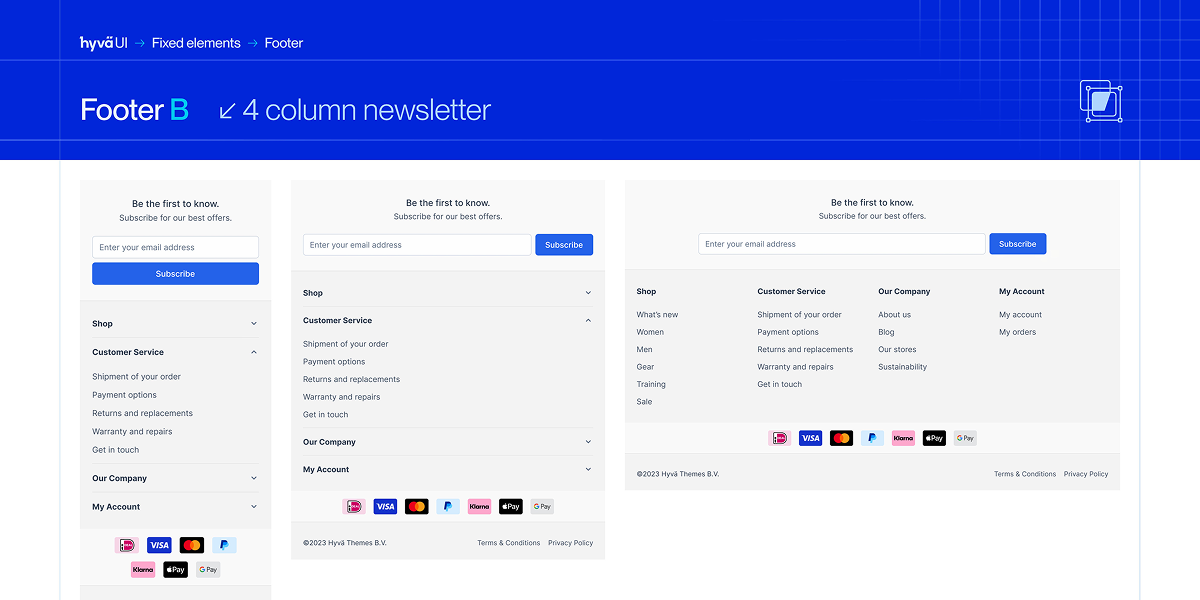
In summary, Hyvä combines high performance with ease of implementation and ongoing development. It's a strong alternative to more complex frontend technologies like PWA - especially when quick launch and cost optimization are priorities.
Which frontend variant to choose: HYVA, LUMA, or PWA?
While Hyvä has strong universal appeal, choosing a frontend technology should align with your business needs and priorities. Here's how the most common Magento frontend solutions compare:
| LUMA | HYVA | PWA | |
|---|---|---|---|
| Unique features | Broad compatibility with third-party modules, at the cost of performance (outdated technology, slow load times). | Clean, lightweight code; fast page loads; flexible customization; fully responsive design. | Combines mobile app and website functionality (e.g., add-to-home-screen, push notifications). |
| Implemen-tation time | Relatively long due to complex architecture. | 30–50% shorter compared to Luma or PWA thanks to its modular structure and ready-to-use components. | Longer than Hyvä due to complex configuration requirements. |
| Implemen-tation cost | Open-source, no licensing costs; development averages around 800 hours.* | One-time license fee of €1000 (with ongoing updates) + ~600 hours of development.* | Open-source, but development averages ~1000 hours (custom PWA theme from Advox: from 300 hours).* |
To assess user experience quality, Google developed Core Web Vitals (CWV), which measure page load speed, interactivity, and visual stability – all of which directly influence SEO rankings.
According to these indicators, the default Luma theme performs poorly, while Hyvä and headless solutions like PWA deliver similar results, particularly on desktop. Ultimately, your choice should reflect your business goals, development vision, budget, and technical capabilities.
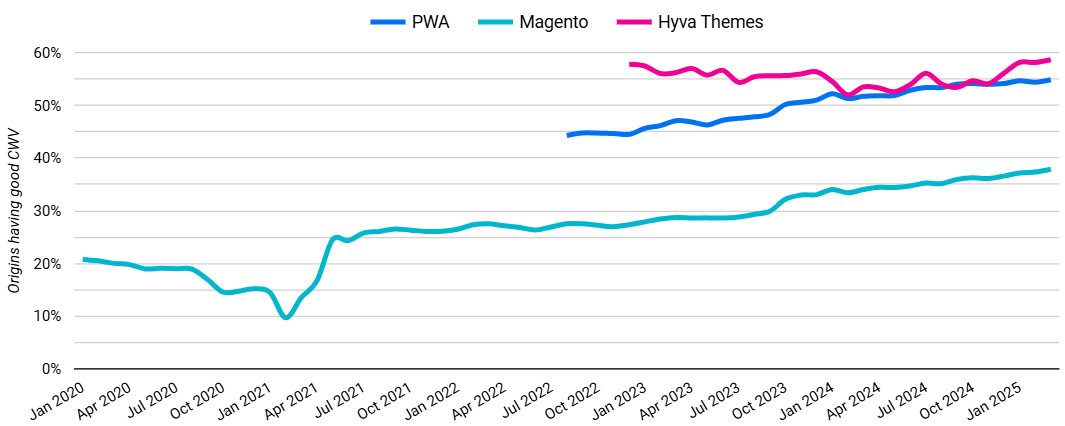 Source: https://tiny.pl/y7jf_31d; data from March 20, 2025
Source: https://tiny.pl/y7jf_31d; data from March 20, 2025
How does Hyvä improve UI?
User interface is a critical link in effective eCommerce. It shapes not just the visual impression but also the flow of the shopping journey and conversion efficiency. Hyvä offers tools that simplify the design and implementation of user-centric frontend solutions:
Hyvä UI - component library
Enables fast creation of attractive graphic layouts, shortens development time, and supports team collaboration. Visual layouts can be previewed early in the design phase, speeding up decision-making. Below are examples of various product card designs.
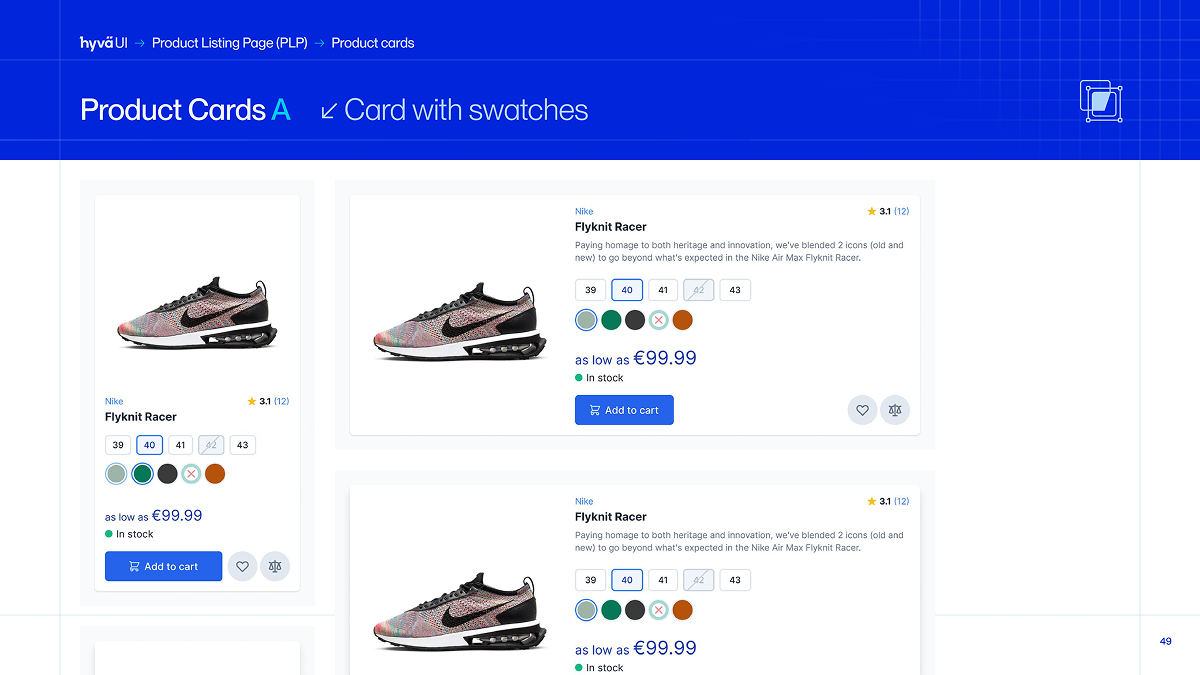
Hyvä Checkout - streamlined purchase path
A one-step checkout solution that takes users directly to the checkout panel in one step, reducing cart abandonment and boosting conversion.
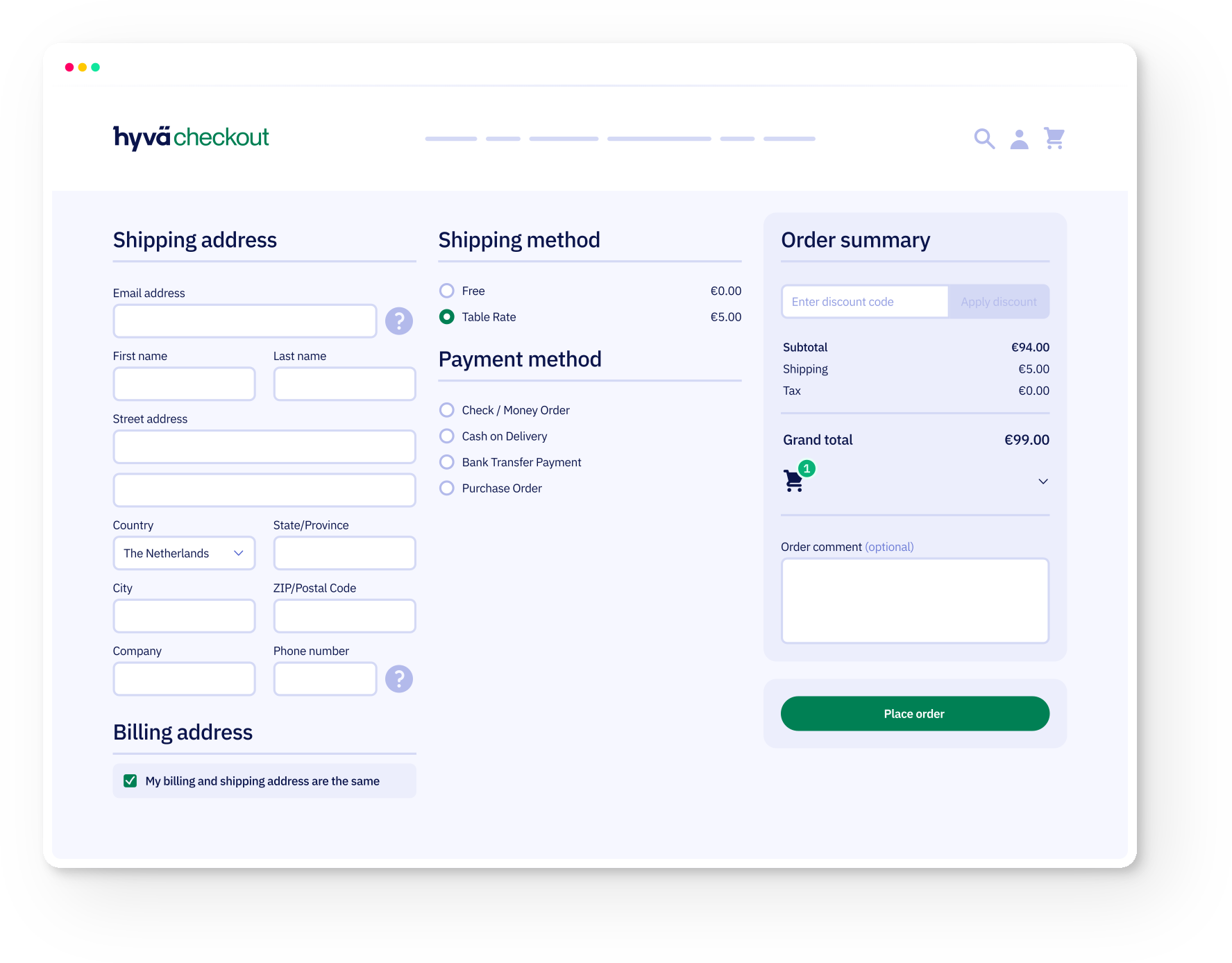
Hyvä Enterprise for large-scale eCommerce
To meet the needs of more complex projects, there's also Hyvä Enterprise – designed for high-traffic eCommerce platforms requiring greater control over performance and stability. Ideal for businesses with complex product structures and multichannel sales, it integrates with Adobe Commerce and offers enhanced technical capabilities while maintaining Hyvä's UI advantages.
Which stores benefit most from implementing Hyvä?
Hyvä is ideal for stores seeking faster frontends and better UX. It works especially well for:
- established businesses transitioning to a more flexible system,
- B2C and B2B platforms with diverse sales models,
- stores expanding into international markets,
- companies focusing on SEO without needing complex data integrations or mobile app replacements,
- industries where managing large product catalogs and system integrations is key (e.g., fashion, health, beauty).
Who is currently using Hyvä?
Both small shops and large-scale eCommerce businesses in B2C and B2B use Hyvä. In 2024, it saw rapid adoption - powering 85% of Magento frontend projects that year and resulting in over 4,000 new eCommerce implementations.
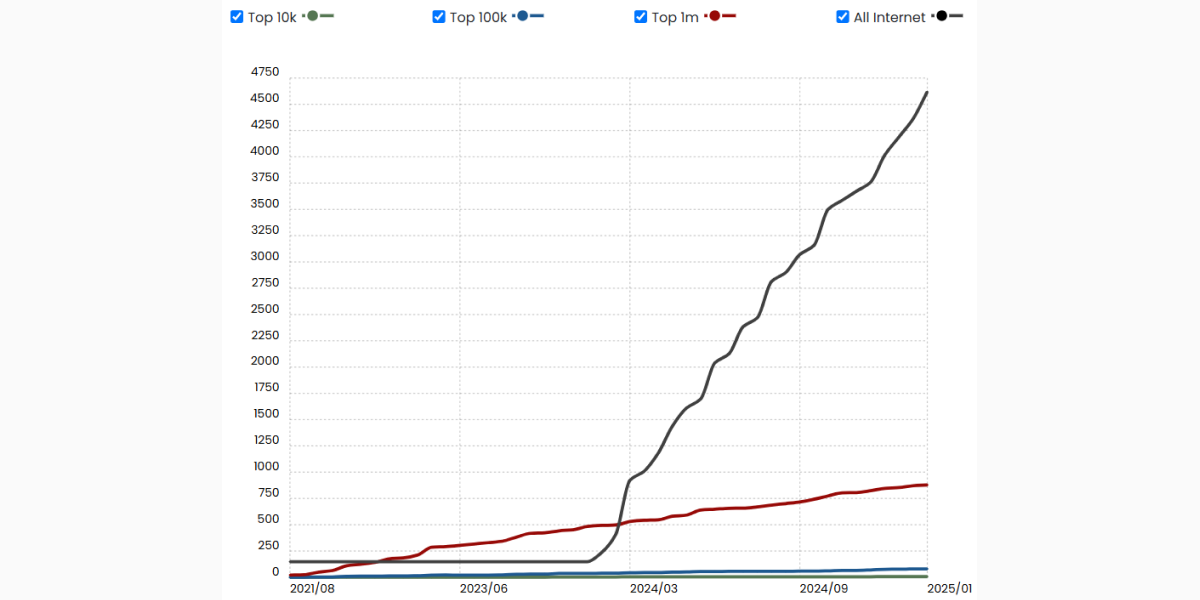 Source: https://trends.builtwith.com/shop/Hyva-Themes, data from March 20, 2025
Source: https://trends.builtwith.com/shop/Hyva-Themes, data from March 20, 2025
Hyvä's popularity continues to grow, driven by the demand for fast, scalable frontend solutions across industries.
Advox case study - Hyvä in action for Olivit and Kinderkraft
While Hyvä's advantages are well-documented, the key question is: how does it perform in real-world projects? At Advox, we've successfully implemented Magento with Hyvä for various clients, proving our technical and strategic expertise. Here are two examples:
Olivit - B2B on Magento 2 with Hyvä
We built a Magento 2-based B2B platform for Olivit, a leading European distributor of vitamins and supplements. The goal was to streamline processes and create a scalable sales foundation. The result: a fast, scalable system tailored to the dynamic B2B landscape.
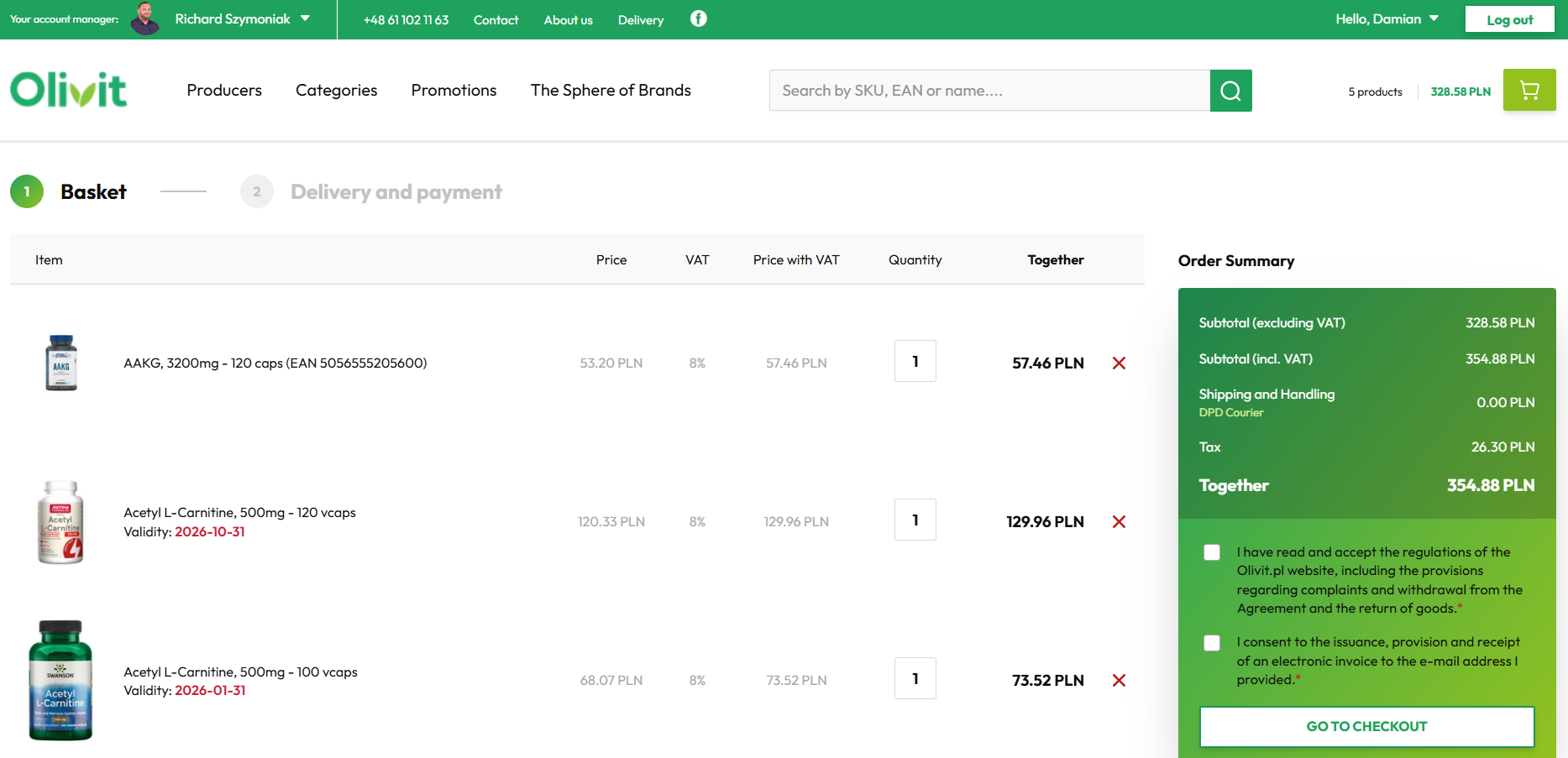
Kinderkraft on Hyvä - optimization and international growth
Another Advox project involved taking over and expanding the online store for Kinderkraft, a producer of strollers and car seats. Migrating to Hyvä enhanced site performance and simplified maintenance. Streamlining the tech stack improved feature rollout, giving the client full control over the store's future development.
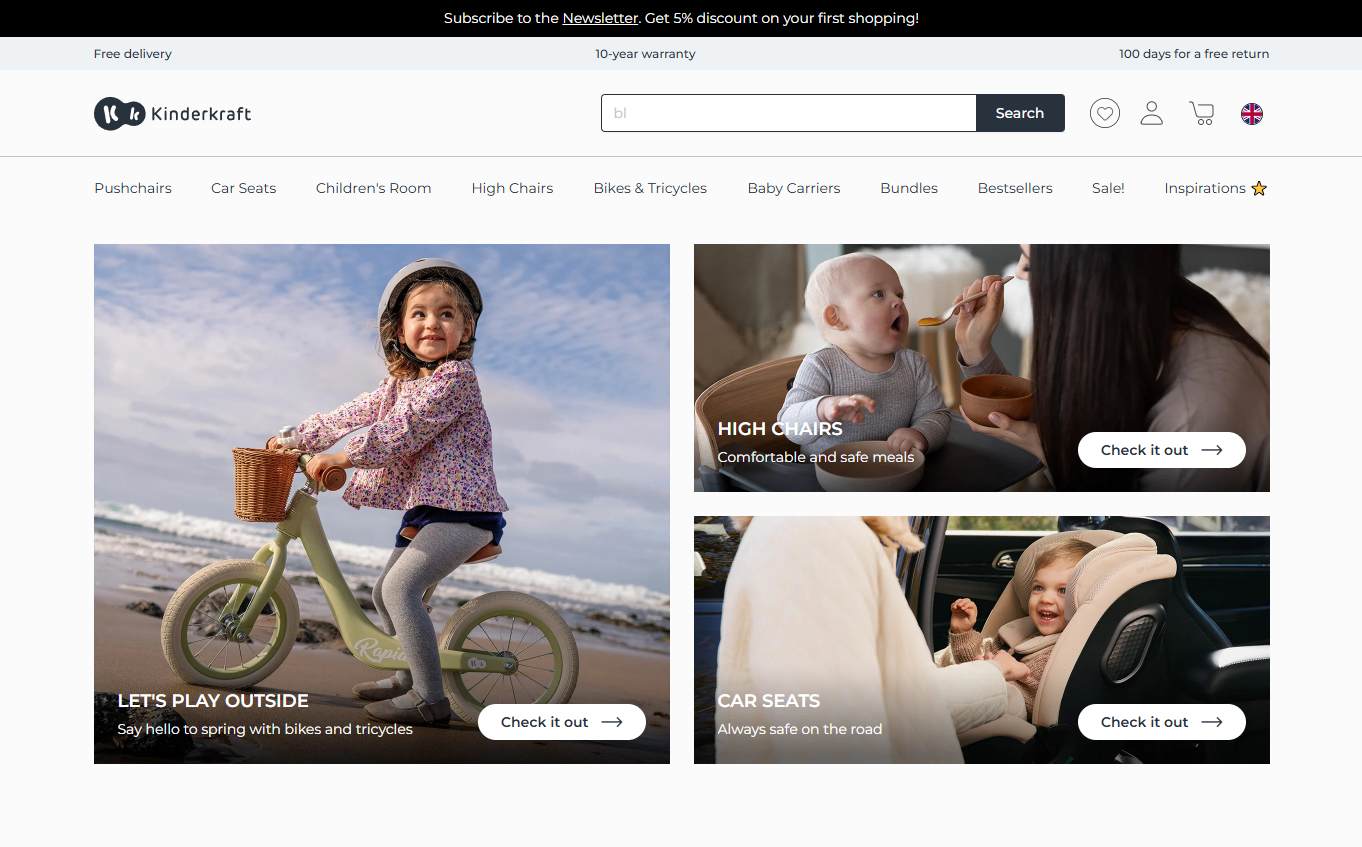
A technology that supports growth – beyond the code
Hyvä might seem like a technical upgrade at first glance, but in practice, it impacts multiple business areas - from site speed and UX to development processes and scalability.
At Advox, we've worked with Hyvä across different contexts - from B2B to fast-moving B2C stores. If you're considering implementing this theme or want to explore how it could support your business - let's talk. We'd be happy to help tailor the best approach for your project.



